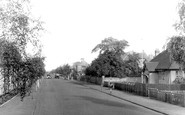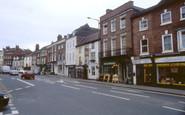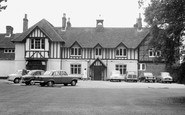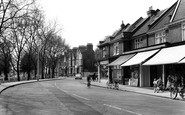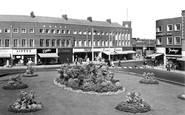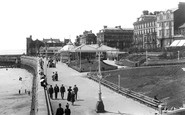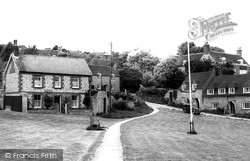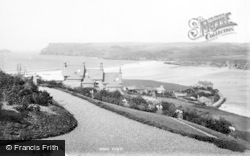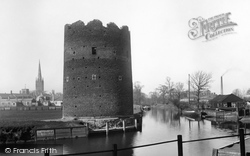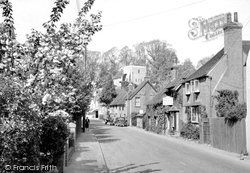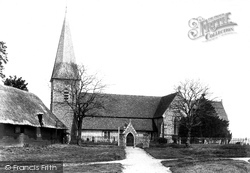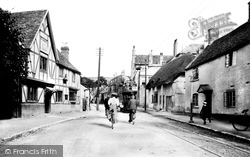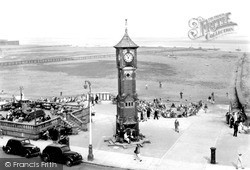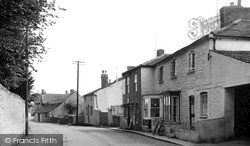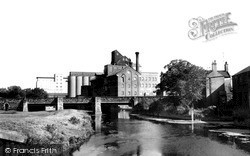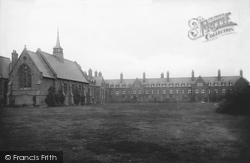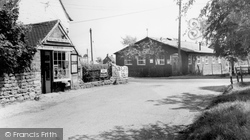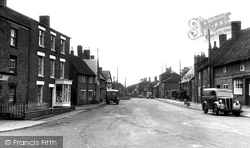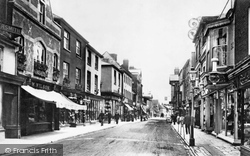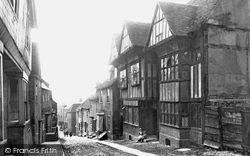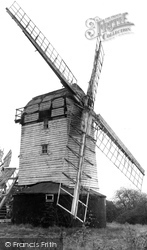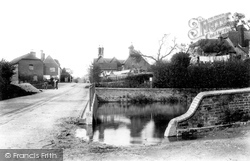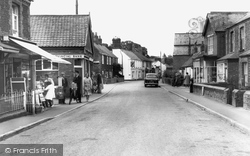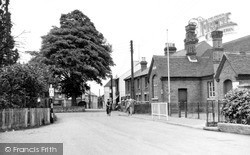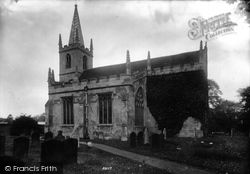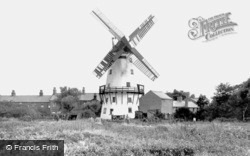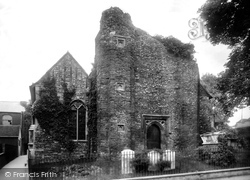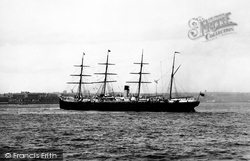Places
Sorry, no places were found that related to your search.
Photos
Sorry, no photos were found that related to your search.
Maps
Sorry, no maps were found that related to your search.
Books
Sorry, no books were found that related to your search.
Memories
655 memories found. Showing results 91 to 100.
Newmarket Hospital
I worked in racing stables in Exeter Road. In the spring of 1960 I was injured when a yearling I was exercising suddenly reared and I 'went out the back door', narrowly missing the edge of the pavement, but hitting my ...Read more
A memory of Newmarket in 1960 by
Best Guinness In Town!
The little white building in the middle is the Lamb & Flag. I spent many a happy lunchtime & evening there in the '80's. It was a Marstons pub, run then by Don & Sheila Jones, an Irish couple who I think had been ...Read more
A memory of Worcester by
My Childhood In Wolverhampton 1946 1955
I played in the standing corn stooks behind our house, had my first pony/horse ride at Dixon's farm where my horse went berserk in a potato field, so I was put onto and stayed on a horse lead. I flew my ...Read more
A memory of Wolverhampton by
Fairdene School
I was a pupil at Fairdene School from 1960-1965. I had lived in New York until I was 6, so being a girl with a Yankee accent in a school for young ladies was quite a challenge! The two female headmistresses, Miss Turner and Miss ...Read more
A memory of Chipstead by
Happy Days Growing Up In Barnes
The picture of Church Road where it ran parallel with The Crescent with all those familiar shops brings memories flooding back. I started life at 33 Glebe Road in 1944 and spent 5 happy years there before moving to ...Read more
A memory of Barnes by
Doon The Den
I stayed in Denhead and used to play down the den almost every day. We used to go to school via the gap either next to Ciff Bells house or the gap next to smiths shop. We used to go along the cliffs behind the scrappiest then straight ...Read more
A memory of Kennoway by
Bramcote Children's Hospital
I was placed in Bramcote 1983 at the age of 9 for a year. I liked it a bit but only as I was getting physically abused by my step mum at home daily,it was a break from the beatings for a week,we would all go ...Read more
A memory of Bramcote by
Stiperstones Poem
THE STIPERSTONES T’was long ago the Ludlow people vexed the Devil very sore He vowed to stone their homes and steeples until they were no more On Cranberries Hill he then collected his apron full of rocks and stones With ...Read more
A memory of Stiperstones by
Bull Ring And Market
I have just been back to Wakefield for a short break. I knew what to expect before I set off. But still don't know whose idea it was to do away with the old Bull Ring which I thought made it look more like a city. Why take ...Read more
A memory of Wakefield in 1959 by
Childhood In The 1950s
It breaks my heart to see how the years, short-sighted councillors and rapacious businessmen have ruined this once noble and beautiful seaside resort. How could anybody have countenanced destroying this view for the ...Read more
A memory of Bridlington by
Captions
405 captions found. Showing results 217 to 240.
The Village Green c1955.
Hayle Bay, with its lines of evenly-breaking surf and golden sand, is now a mecca for surfers and tourists, and New Polzeath has grown along the low cliffs on the opposite side of the beach.
Cow Tower was built on the River Wensum in 1378 as a boom tower, controlling the flow of river traffic at the point where the city wall ended.
The houses of Bramber are varied and picturesque. Some are built of brick or flint, and some are creeper-clad. The village was once an important port on the River Adur.
This fine Early English church, set back from the village and behind a narrow green, boasts a raised 13th-century chancel and a tapering, shingled broach spire.
Reputedly England's most haunted village, and a market town in the time of Henry III, Prestbury is now a residential suburb of Cheltenham.
The marked two colours of brick are not so easy to distinguish fifty years on from our earlier photographs. The ornate clock tower was a gift to the town in 1905 from Alderman J R Birkett.
Now a National Trust property and open as a museum, this stone, brick and timber building is said to be the smallest town hall in Britain.
Puriton's brick and tile industry has now gone, but Middle Street is much the same today. Biggs' general store (right), now the post office, sits here above Good's Farm.
Whitworth Brothers Flour Mills stand beside the A509 London Road bridge.
Cambridge's first women's college started out in Hitchin in 1869, and was moved to Girton three years later - sufficiently far removed from Cambridge and the temptations of its male students.
Cambridge's first women's college started out in Hitchin in 1869, and was moved to Girton three years later - sufficiently far removed from Cambridge and the temptations of its male students.
Bristol cigarettes and Brooke Bond tea could be purchased at the Post Office Stores, run by M S Beevers at the time of this photograph.
Some of the houses are built of brick, some of stone. The van parked on the left of the street is advertising Mackeson's stout.
Salisbury was founded in the 13th century: there was no earlier settlement here, consequently the wide streets were laid out on a grid pattern.
The old hospital (1576) on the right, so called since it performed that function during the Napoleonic Wars, forms the main subject of this early picture of the most photographed of Rye's cobbled
This mid 18th-century post mill has 'I Swan 1749', 'W Bedwell' and 'John Swan 1754' carved on the beams. The mill was restored in 1966-68.
Once a major ironworking centre, this village also boasts the first Fuggle hops to be grown.
This small village sits between the sea and fields of bright laven- der. At Caley Mill there is a lavender water distillery, and in late summer the fields shimmer with a deep blue.
Although actually very old, this is another Medway-side village that was left with a distinctly Victorian appearance by the 19th century building boom, when it was a source of brick earth and also chalk
Doddington receives many visitors, for Doddington Hall, although privately owned, is often open to the public.
Marsh Windmill is a large Fylde-type brick tower mill with four patent shuttered sails and a fantail. Dated 1794, it worked until 1922.
The late 17th-century tower with its liberal use of salvaged Roman brick fell in the 17th century.
He put money, new ships and new life into the company, and brought in the right partners and associates to found the successful business.
Places (0)
Photos (0)
Memories (655)
Books (0)
Maps (0)

